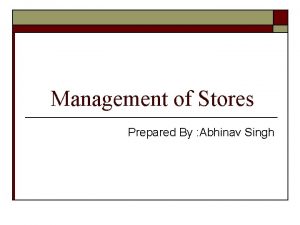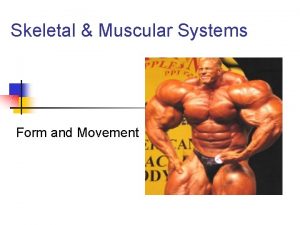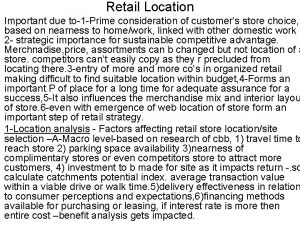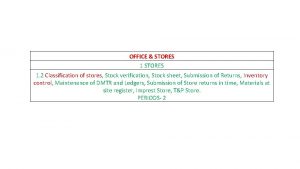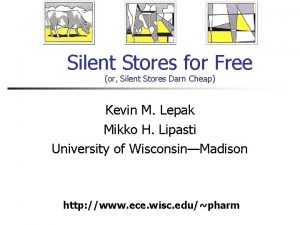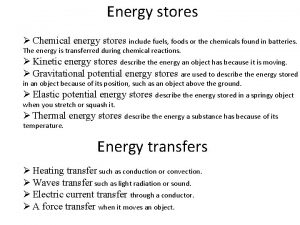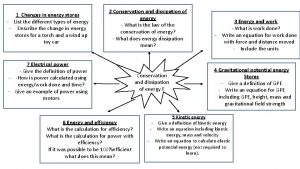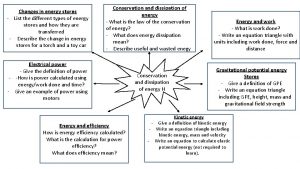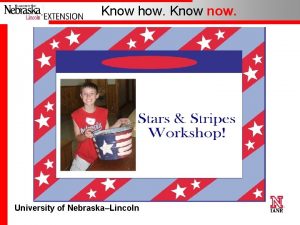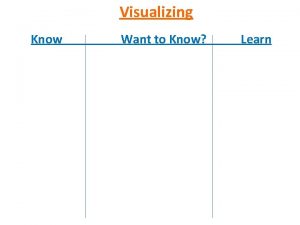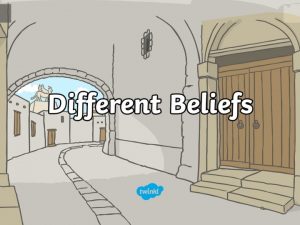We know that different stores are different Different



















![mydata <- read. csv("C: /Users/jlariv/Documents/Hetero. ATE/ln_Required. Data. csv") mydata<- mydata[, 2: ncol(mydata)] colnames(mydata) # mydata <- read. csv("C: /Users/jlariv/Documents/Hetero. ATE/ln_Required. Data. csv") mydata<- mydata[, 2: ncol(mydata)] colnames(mydata) #](https://slidetodoc.com/presentation_image_h2/44e9da713981f67a7e16eb5577679a5c/image-20.jpg)






![library(geosphere) x <- collapsed[ , c(2: 45, 65: 72)] ##pull variables to cluster on library(geosphere) x <- collapsed[ , c(2: 45, 65: 72)] ##pull variables to cluster on](https://slidetodoc.com/presentation_image_h2/44e9da713981f67a7e16eb5577679a5c/image-27.jpg)




- Slides: 31



We know that different stores are “different” - Different level of sales - Different sales price - Different sociodemographic characteristics Is there a smart way to group them?

common task

ID Age Educ Politics Treated 1 59 BA D 0 2 33 Ph. D n/a 1 3 41 HS I 1 … … …


CTR Loss in CTR from Link Demotion (US All Non-Navigational) 25, 4% 13, 5% 17, 9% 4, 9% 6, 9% 3, 5% 4, 0% Control (1, 3) (1, 5) (1 st Position) Original CTR of Position Gain from Increased Relevance 21, 6% 1, 7% 2, 1% (1, 10)








how does this matter for treatment?




library(rpart) library(rpart. plot) library(partykit) library(permute) library(maptree)
![mydata read csvC UsersjlarivDocumentsHetero ATElnRequired Data csv mydata mydata 2 ncolmydata colnamesmydata mydata <- read. csv("C: /Users/jlariv/Documents/Hetero. ATE/ln_Required. Data. csv") mydata<- mydata[, 2: ncol(mydata)] colnames(mydata) #](https://slidetodoc.com/presentation_image_h2/44e9da713981f67a7e16eb5577679a5c/image-20.jpg)
mydata <- read. csv("C: /Users/jlariv/Documents/Hetero. ATE/ln_Required. Data. csv") mydata<- mydata[, 2: ncol(mydata)] colnames(mydata) # This just gets the data in a format where everything has a name I can work with. data. To. Pass<mydata[, c("ln_resid_use", "heat_pump", "gas_heating", "vinyl", "wood", "brick", "beds", "top_floor", "basement", "tot_sq_ft", "yearbuilt", "unregistered", … …"undeclared", "rep", "dem", "treated", "k. Wh", "expense", "CO 2")] #This creates a dataframe with only the variables I want to use to explain variation in the variable I care to examine (e. g. , ln(residual use) #This next line actually fits the tree. bfit<-rpart(as. formula(ln_resid_use ~. ), data=data. To. Pass, method="anova", cp=0. 0003) #NOTE: cp=. 0003 is the "complexity parameter" and the lower it goes, the more complicated the tree gets (e. g. , more leaves). draw. tree(bfit) #This command draws the tree data. To. Pass$leaf = bfit$where #This final command identifies which observation is associated with what leaf and creates a new variable for it in the original dataframe #disco #Now you know where hashtags came from


So… Regression trees are cool at categorizing variables with a continuous LHS variable (e. g. , minutes on application) What if there is no LHS variable? Example: rather than minutes on an application as a function of covariates, you care about how people use the application. -> e. g. , user types or “road types”




![librarygeosphere x collapsed c2 45 65 72 pull variables to cluster on library(geosphere) x <- collapsed[ , c(2: 45, 65: 72)] ##pull variables to cluster on](https://slidetodoc.com/presentation_image_h2/44e9da713981f67a7e16eb5577679a5c/image-27.jpg)
library(geosphere) x <- collapsed[ , c(2: 45, 65: 72)] ##pull variables to cluster on from dataframe “c” colnames(x) <- colnames(collapsed)[c(2: 45, 65: 72)] ##Clustering for(i in 1: 1){ ##10 tries for each cluster size so we can test with multiple groupings if we choose set. seed(i) ##set the number of clusters we want to use for(j in c(8)){ ##clusters of size 8, 10, 15) k <- j ##K means clustering cl <- kmeans(x, k) ##k is the number of clusters, x is our set of clustering variables collapsed <- cbind(collapsed, cl$cluster) ##append data with cluster ids colnames(collapsed)[ncol(collapsed)] <- paste("cluster_", k, "_seed_", i, sep="") } } segment_clusters = data. frame(cbind(as. character(collapsed$tmc), collapsed$cluster_8_seed_1)) ##using k=10 segmentscsv$tmc <- as. character(segmentscsv$tmc) ##making sure segements aren't stored as factors segment_clusters$X 1 <- as. character(segment_clusters$X 1) ##X 1 is the segment variable segmentscsv <- merge(segmentscsv, segment_clusters, by. x = "tmc", by. y="X 1") colnames(segmentscsv) <- c(colnames(segmentscsv)[1: (ncol(segmentscsv)-1)], "cluster_id")

Non-Price Competition

1/1/2022 Game Theory, Market Structures, and Firms Slide by Will Wang 29

Hotelling (horizontal differentiation) • Assume that substitutes exist but they are imperfect and therefore costly. - ex: Stevens Pass versus Crystal Mountain • Idea: How much should firms charge given where they are in horizontal “product space”? • Assume firms identical in every way but location (simplest possible model of differentiation). 1/1/2022 • Monopoly? • Anywhere • Duopoly? • Middle • Three players? • No pure strategy equilibrium • Median voter theorem? • How might it break down? “Walk” is costly and distribution not uniform Game Theory, Market Structures, and Firms 30

Vertical differentiation 1/1/2022 • Game Theory, Market Structures, and Firms 31
 Insidan region jh
Insidan region jh Concept of store management
Concept of store management Chiến lược kinh doanh quốc tế của walmart
Chiến lược kinh doanh quốc tế của walmart Gây tê cơ vuông thắt lưng
Gây tê cơ vuông thắt lưng Block xoang nhĩ độ 2 type 1
Block xoang nhĩ độ 2 type 1 Tìm vết của đường thẳng
Tìm vết của đường thẳng Sau thất bại ở hồ điển triệt
Sau thất bại ở hồ điển triệt Thơ thất ngôn tứ tuyệt đường luật
Thơ thất ngôn tứ tuyệt đường luật Con hãy đưa tay khi thấy người vấp ngã
Con hãy đưa tay khi thấy người vấp ngã Thơ thất ngôn tứ tuyệt đường luật
Thơ thất ngôn tứ tuyệt đường luật Tôn thất thuyết là ai
Tôn thất thuyết là ai Phân độ lown ngoại tâm thu
Phân độ lown ngoại tâm thu Dilan gorur
Dilan gorur The one who reigns forever he is a friend of mine
The one who reigns forever he is a friend of mine Know history know self
Know history know self What part of the brain stores long term memory
What part of the brain stores long term memory Stores minerals and anchors muscles
Stores minerals and anchors muscles What stores information in a cell
What stores information in a cell Jordan v jewel food stores inc
Jordan v jewel food stores inc Supermarket market map
Supermarket market map Lidl pod point
Lidl pod point Distributed data stores
Distributed data stores Drainage basin inputs
Drainage basin inputs Oviduct frog
Oviduct frog Milland village shop
Milland village shop The distinct threadlike structures that contain the genetic
The distinct threadlike structures that contain the genetic Consumable stores in accounting
Consumable stores in accounting Michaels stores edi
Michaels stores edi Family clothing stores
Family clothing stores For service and retail stores a prime factor
For service and retail stores a prime factor Stores hereditary information
Stores hereditary information Stores specialists inc
Stores specialists inc

